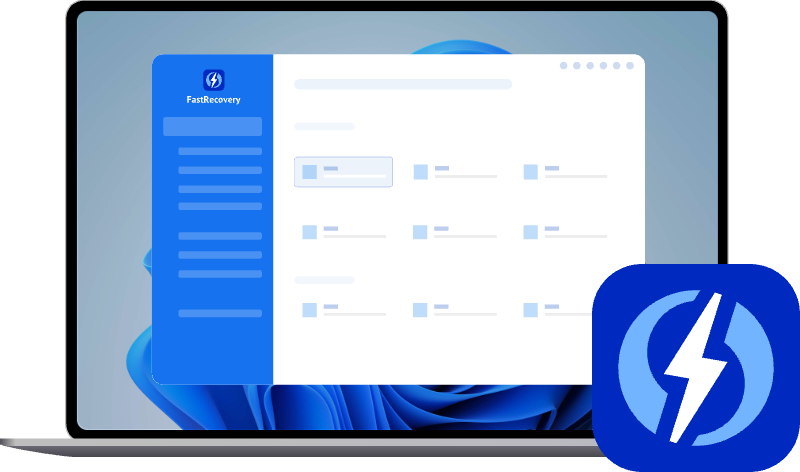Folder Disappeared from External Hard Drive? Fixed!
Seeking ways to fix the issue "folder disappeared from external hard drive"? Here are 5 effective methods to recover hidden/deleted/lost folders along with step-by-step guides.
Why do files/folders disappear from external hard drive?
External hard drives bring great convenience for users to store and transfer data. However, data loss may be an unavoidable situation for most people. Below is a real user case:
"I have an external hard disk of 1TB, but I cannot access the content. When I check the properties of this hard drive, it shows 900GB is empty and only 100GB is full. Why do files/folders disappear from external hard drives? Could you help me recover the data?"
Don't worry, it's possible to fix files/folders disappeared from external hard drive. Here's a table showing the possible reasons and recommended methods:
| Possible Reasons | Description |
|---|---|
| ❌Accidental deletion | It’s one of the most common reasons for data loss and the easiest situation to recover from. Attempt using data recovery software. |
| ⌨️Formatting | Sometimes, you may be asked to format the disk, or attempt to fix disk errors. However, the files still exist deep within the file system. Try to scan and retrieve data using software. |
| 👁🗨Hidden files | The hidden file attribute can make files or folders invisible. Thus, Windows apps like Windows File Explorer will not show these files or folders by default. You need to show hidden files to access it. |
| ⛔File system errors | The Windows OS cannot recognize a corrupted/RAW file system or if the partition table is damaged. Try the disk check tool. |
| 💾Corrupted memory | If the mirror image in memory is damaged, your Windows operating system may fail to respond quickly. Meanwhile, data loss is inevitable as it stores all incremental backups from users files to system folders. If you only care about the data, try using reliable data recovery software. |
| 🦠Virus infection | Viruses cause hidden (which may modify the CheckedValue in Registry) or deleted files or folders, making it disappear. You need to scan disk for viruses and remove, then attempt data recovery |
When there are files disappear from external hard drive in Windows 10 or 11, don’t write new data to your device if you want to recover missing folders with a higher success rate. Because any written performance could overwrite these missing folders.
How to fix the folder disappeared from external hard drive
There are many ways to recover disappeared files from external hard drive, here are 5 different ways provided, you can choose one that works best for you.
▶ Method 1. Recover deleted/lost files with data recovery software
AOMEI FastRecovery is a reliable and user-friendly data recovery software for Windows to recover external hard drive missing files in Windows 11/10/8/7 and Windows Server.
- It has a free version that can recover data up to 500MB.
- Combine Quick Scan and Deep Scan to thoroughly scan hard drives and find as many files as possible.
- Support a wide range of data types, such as documents (DOCX, XLSX, CSV, PDF, PPT), images (JPG, PNG, GIF, PSD), videos (MP4, MOV, AVI, WMV, X3F), etc., in over 1000 data formats.
- Search or filter data quickly through file name, extension, data type, etc.
- Preview and recover files while scanning.
- Recover specific files or folders instead of all.
- Work perfectly with NTFS, FAT32, exFAT, and ReFS file systems.
Step 1. Scan the external hard drive
Install and run AOMEI FastRecovery on your Windows system. Then, find your connected external HDD and click Scan.
Step 2. Find the disappeared folder and files
It will scan the drive with Quick Scan. In addition, you can use the Filter and Search bar to narrow down the scope to quickly find the files you need to recover. If the target file is still not found, click Deep Scan to search for more disappearing files on that drive.
But you can choose to search or filter files quickly according to the following items. Double-click the files to preview (if you are not sure).
- Name/Extension: Type the file name or extension in the search box to locate files quickly.
- Data type: Select a data type (documents, images, audios, videos, etc) to target files.
- Size: Set the file size (<128KB, 128KB~1MB, 1MB~512MB, etc.)
- ...
Step 3. Recover files disappeared from external hard drive
Then, click Recover and select a new path to save the recovered files or folders. Restoring files to original location may cause data overwriting, making data recovery more difficult.
▶ Method 2. Show hidden folders
If you are sure your files/folders are on external hard drive but you can't access them, it may be hidden. You need to unhide files or folders to gain access. Let’s see how it works.
Using Windows File Explorer
It's the most common method to show hidden files.
Step 1. Press “Windows + E” to open “Windows File Explorer”. Then, click your external hard drive > “View” > “Options”.
Step 2. Under the View tab, go to the "Advanced settings" section, and check the “Show hidden files, folder, and drives” option. Then, click “Apply” > “OK”.
Using the Attrib command
The Attrib command allows you to change the hidden file attributes of a storage device. Try it if you want to unhide missing files and folders.
Step 1. Open CMD with administrator. Type cmd in the search box and select Run as administrator.
Step 2. Type attrib -h -r -s /s /d E: *.* and press Enter to execute. Please replace E: with your drive letter.
Using the Registry Editor
The virus may change the CheckedValue setting in the Registry if you fail to set the folder attribute. In this case, you need to change folder settings in “Registry” manually.
Step 1. Press “Windows + R” to open and type “regedit” in the Run command window. Then click “OK” or hit “Enter”.
Step 2. Go to this route: HKEY_LOCAL_MACHINE\SOFTWARE\Microsoft\Windows\CurrentVersion\Explorer\Advanced\Folder\Hidden\SHOWALL
Step 3. Confirm whether the “CheckedValue” is “1”. If not, right-click on it and hit “Delete”. Then right-click on the blank space, and click “New” > “DWORD (32-bit) Value”. After that, set the value data as “1”.
▶ Method 3. Use the disk check tool
The corrupted file system could prevent you from viewing files/folders on the external hard drive. If you want to reappear your missing folders, please fix file system errors by checking the external hard drive.
Step 1. Connect the external hard disk to your PC. Then click “This PC” > right-click on your connected external hard drive > “Properties”.
Step 2. Under the Tools tab, click “check” to start the error-checking process.
Step 3. Click “Automatically fix file system errors” > “Start”. After the process, you can open Windows File Explorer again to check whether these folders are visible to you or not.
▶ Method 4. Scan the disk for viruses and remove
Virus infection can also be a common cause behind the “folder disappeared from external hard drive” issue. We strongly recommend you run antivirus software to check and remove the virus first. Directly use Windows Defender if you don't want to download any software.
Step 1. Press "Win + I" to openWindows Settings. Then, click “Update & Security“ >“Windows Security“ and select “Virus & threat protection“.
Step 2. Click “Scan options“.
Step 3. Select “Microsoft Defender Offline scan“ to thoroughly scan the disk for viruses. Then, click “Scan now“ to proceed.
▶ Method 5. Use Windows File Recovery
You can also try Windows File Recovery to recover lost files from internal and external hard drives, SSD drives, USB flash drives, SD cards, and other electronic devices. It's a free command-line data recovery utility, released by Microsoft, and only available on Windows 10 and 11.
Note you need to use the command prompt to recover the deleted files/folders because it lacks a GUI (graphical user interface) interface. Before using it, you need to learn the syntax and necessary parameters, such as switches, and recovery mode.
- The syntax: winfr source-drive: destination-drive: [/mode] [/switches]
- 4 recovery modes - two basic options (Extensive, Regular) and two advanced options (Segment, Signature)
- The file system (NTFS, FAT, exFAT, and ReFS) is a key element in deciding a recovery mode. Please check it before performing data recovery.
- The switches can narrow your search.
Step 1. Check the file system of your external hard disk. Connect the external hard drive to your computer, and click “This PC” > right-click on it > “Properties”.
Step 2. Select a recommended mode according to the file system of your external hard disk and data loss scenarios.
|
File system |
Scenarios |
Recommended mode |
|
NTFS |
Deleted recently |
Regular |
|
NTFS |
Deleted a while ago |
Extensive |
|
NTFS |
After formatting a disk |
Extensive |
|
NTFS |
A corrupted disk |
Extensive |
|
FAT and exFAT |
Any |
Extensive |
Step 3. Choose your needed switches from the following form.
|
Switches |
Definition |
Supported mode(s) |
|
/n |
Filter the scan range: scans for a specific file with its file name/path/type, etc. |
All |
|
/y: |
Recover specific extension groups. |
Signature |
|
/k |
Recovers system files. |
NTFS Segment |
|
/u |
Recovers undeleted files, for example, from the Recycle Bin. |
NTFS Segment |
Step 4. Download Windows File Recovery from the Microsoft Store by clicking the “Get” button. Then, install and “Open” it on the computer.
Step 5. Type the winfr command to recover disappeared files. For example, to restore recently deleted ZIP folder from external hard drive (E:) to the destination drive (D:), you need to type as follows and press “y” to go on.
winfr E: D: /regular /n *.ZIP
After recovery, you can open the destination drive to locate your retrieved folders. If you need to stop the recovery process, press the “Ctrl + C” keys.
Bonus tip - Prevent external hard drive data loss
After solving the "folder disappearing from external hard drive" problem, some users raise questions such as “is there any way for external hard drive data loss prevention?” It turns out there is, that's, create copies of files using reliable backup software.
Step 1. Connect your external hard disk to the computer. Install and launch AOMEI Backupper on your PC. Then, click “Backup” > “File Backup”.
Step 2. Click “Add folder” or “Add file” > “This PC” > “Devices and drives” to add files or folders. Then, click the folder-shaped button to select a path to save your files.
Step 3. At last, click the “Start Backup” button. It will create a copy of selected files. Click “Finish” to exit the window after the operation is completed.
Conclusion
It's frustrating to find the files or folders disappeared from external hard drive. Fortunately, this article provides 5 effective ways to get them back. You can built-in Windows features or 3rd-party tools like AOMEI FastRecovery to scan and recover files from an external hard disk.

